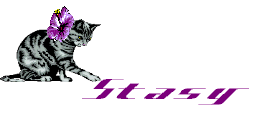


FRED FRITH: Live in Japan (CD on Fred Records/ReR Megacorp)
This is a 2010 CD reissue (featuring 70 minutes) of a vinyl album release from 1982 of music recorded live in Japan in 1981 at: Nichifutsu Kaikan, Tokyo, July 11, Mainichi Kokusai Salon, Osaka, July 17, 80s Factory, Fukuoka on July 20, and Kawai Hall, Maebashi, July 22.
Fred Frith plays: 1961 Burns Black Bison guitar, custom double neck guitar, pilotŐs throat microphone from WWII, HH electronic stereo mixer amp with HH digital effects unit, piano, and violin.
Abstract sound construction is the keynote factor in this music, mixing plucked strings with string scrapings and deviant treatments.
Track one is a mammoth presentation (at 22 minutes long), featuring hesitant manipulations that gradually accrete in strength and density and ultimately achieve a ponderous presence of piercing definition. Guitars are subjected to careful torture and blended with feedback and impacts and processed vocals, culminating in a sound sculpture that throbs with engaging activity.
Subsequent shorter tracks offer compressed doses of similar experimentation, each resulting in their own characteristic flavor and personality. The strings are coaxed into issuing mangled noise of a bewitching nature. Chaos is harnessed and tweaked into delightful structures that often achieve a haunting, almost melodic cacophony.
This album marks a historic point in Frith's extravagant career, documenting a period when he uniquely performed solo and subjected his instruments to innovative manipulations that were to become customary doctrines for numerous other musicians in the following decade. This glimpse into Frith's fervent performance is exacting and powerfully intimate.

UNIVERS ZERO: Heresie (CD on Cuneiform Records)
This is a 2010 CD reissue (offering 63 minutes) of a 1979 album release, and includes a 12 minute previously unreleased bonus track from 1975.
Univers Zero is: Michel Berckmans (on oboe and bassoon), Daniel Denis (on drums and percussion), Patrick Hanappier (on violin and viola), Guy Segers (on bass and voice), and Roger Trigaux (on guitar, piano, organ and harmonium. The line-up for the 1975 track is: Denis, Hanappier, Vincent Motoulle (on keyboards), Segers, and Trigaux.
Track one ("La Faulx" 25:03) commences with dronish elements of an orchestral nature, while horns and harmonium achieve a dark mood that is soon tempered by ominous vocals. Percussion pitters at the periphery, mounting a sense of tension that is enhanced by a rise of squealing violin. This aggregation of edginess continues, gaining puissance through its accumulative discord...until bassoon coaxes things into a more melodic structure. From this point, the instruments deliver a cohesion that plunges traditional chamber music into a realm of tremulous disquiet. The horns generate an urgency with their deep-voiced issuance. The drums offer rhythms that instill a sense of monstrous anticipation, heralding an imminent darkness. The sharp resonance of the strings provides a strident punctuation amid this gloom. The keyboards slither amongst the other instruments, almost as hidden as the rumbling bassline. Passages are devoted to enhancing an ever-growing portentous mood that continues to mount to an explosive and clattering climax.
Track two ("Jack the Ripper" 13:20) again uses the bassoons to generate an air of dread. Pensive violin lends a touch of mystery, soon thrown into the listener's face by an eruption of snappy drumming. An undercurrent of droning organ carries melancholia into full-blown stress. Guitar adds a gutsy touch with chords that are often swallowed by the gestalt. While growling bass lingers beneath the surface like a serpent waiting to strike. Periodic devolutions into seeming chaos provide engaging bridges between the pinnacles of ecstatic eeriness.
Track three ("Vous le Saurez en Temps Voulu" 12:51) continues to fashion heart-stopping tuneage from a melange of gloomy elements. The horns and strings achieve a desperate state of controlled angst punctuated by outbreaks of ominous rhythms. Dire keyboards contribute a foggy expectation which is escalated by the terse horns. Again, signature changes are profuse and profound, resulting in a constant increase of anxiety. Subsequent relapses into the dense melodies offer no release from this stress, serving only to hone the overall intensity.
The bonus track ("Chaos Hermetique" 11.52) features keyboards in a more prominent role. The sparkling guitar and snarling bass also appear unimmersed and clear, contributing fresh cadence to the murky tension. Not that there's any absence of horns or strings--they're there and offering constant fluster. While the drums provide alarming rhythms that persist in changing tempo. The relentless unpredictability displayed by the instruments results in a steady agitation that is in remarkable contrast to the wondrous unity presented as the instruments mesh into a quirky fluidity.
This release affords an intimate view of the band's formative years. But it equally delivers a refreshing divergence from traditional rock and chamber music through the dark fusion of those genres.
The CD comes with a 16 page booklet that includes numerous photos and a revealing glimpse into the bandŐs evolution during this formative period.

| Entire page © 2010 Matt Howarth. All rights reserved. |
Webpage design by
 |